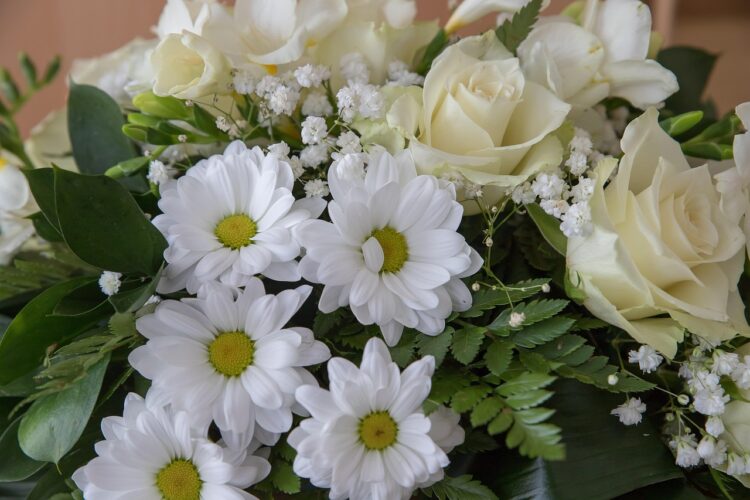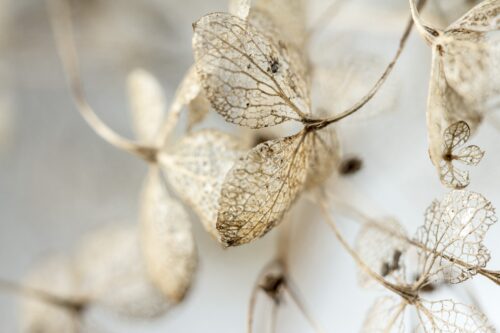Welham Jones
https://welhamjones.co.uk/wp-content/themes/welham-jones/img/logos/supersonic-playground-logo.png
300
80
Welham Jones
Where does the tradition of flowers at funerals come from?
Flowers have always been one of the most natural ways to express our deepest emotions, whether joy, celebration, or sympathy. When words are not enough, flowers offer a way to bring beauty and comfort to an otherwise difficult moment.
The tradition of using flowers in funerals dates back thousands of years – not for purely aesthetic reasons, but as a practical necessity. In 1951, archaeologist Dr Ralph Solecki discovered several ancient burial sites in Shanidar Cave, Northern Iraq, containing pollen and flower fragments dating back to 62,000 B.C. This was recorded as one of the earliest forms of human ritual, suggesting that even early humans used flowers to mark the passing of someone they loved.
In ancient times, flowers were also used to mask odours before modern embalming techniques were developed. Depending on the climate, flowers were placed in abundance around the deceased to make the environment more pleasant for mourners.
Today, flowers are chosen primarily for their beauty, symbolism, and ability to create a sense of calm and dignity. They help us express love, comfort and sympathy in a way words often cannot – turning a sombre occasion into a meaningful, even uplifting, tribute.
What do different flowers symbolise at funerals?
Lilies
The most traditional funeral flower, lilies are closely associated with purity and the soul’s return to innocence. White stargazer lilies symbolise sympathy and compassion, while Oriental lilies are often chosen to represent eternal life.
Roses
White roses symbolise humility and reverence, red roses represent love and respect, and pink roses express gratitude. Yellow roses are often sent by friends to signify their enduring bond, while a single rose in an arrangement is a heartfelt gesture of lasting love. They also symbolise remembrance – which is why we leave one behind on the pillow when we bring a loved one into our care.
Orchids
Orchids symbolise eternal love and beauty.
Gladioli
Tall and striking, gladioli symbolise strength of character and integrity – making them a fitting choice for honouring someone principled and courageous.
Chrysanthemums
Chrysanthemums are strongly associated with funerals in many cultures and symbolise loyalty, friendship, and rebirth.
Carnations
White carnations represent innocence, pink convey remembrance, and red symbolise admiration.
Hydrangeas, daffodils and daisies
Hydrangeas represent understanding and friendship; daffodils are linked to hope and new beginnings; daisies symbolise innocence and are often used for children’s services.
What do different colours of flowers symbolise at funerals?
- White flowers – Purity, peace, innocence. The most traditional choice for funerals.
- Red flowers – Love, respect, and deep loss; a powerful tribute for a spouse, partner, or parent.
- Pink flowers – Grace and admiration; a gentle way to honour someone’s warmth and compassion.
- Yellow flowers – Friendship and joy; particularly fitting for a celebration of life.
- Purple flowers – Dignity, respect, and spirituality; perfect for someone admired for their strength or faith.
What are the cultural differences in flower symbolism at funerals?
Flower symbolism can vary between cultures. For example, white chrysanthemums are a common funeral flower across much of Europe and Asia, symbolising death and lamentation – whereas in the UK, they may simply represent loyalty and friendship.
In China, Japan and Korea, white is the colour of mourning, while red flowers may be considered inappropriate for funerals. In contrast, many Western cultures embrace red roses as a symbol of love and respect.
If you are arranging a funeral for someone from a different cultural background, it is always wise to check what is customary for that culture to ensure your choices are appropriate.
5 tips for creating the perfect funeral floral arrangement
- Choose flowers with meaning – Select blooms that reflect your loved one’s personality or your relationship with them. It is equally as important to think about the colour: white and soft pastels are classic, but brighter colours can be a lovely way to celebrate a joyful life.
- Consider the combination – perhaps you’d like to express the content that a mother has found peace, while honouring the grace with which she went through life, opting for white and pink; or you could combine redan yellow, representing the respect you held for a father wo was more than just a parent, but a friend
- Select the right style – From coffin sprays to wreaths or smaller posies, consider what will best suit the service.
- Work with a local florist – They can help you source seasonal flowers and create a cohesive, elegant tribute.
- Coordinate with your funeral director – At Welham Jones, we can guide you on timing, placement, and delivery so everything is taken care of on the day.
Flowers are more than just decoration – they are a language of love, comfort and remembrance that helps us say goodbye when words fall short.
If you’re planning a funeral in Borough Green, Orpington and Chelsfield, Chislehurst and Bromley, Sevenoaks, Swanley, Tonbridge or Tunbridge Wells, our experienced funeral directors can help you choose the right funeral flowers to create a fitting and personal tribute. Please contact us for compassionate support.






